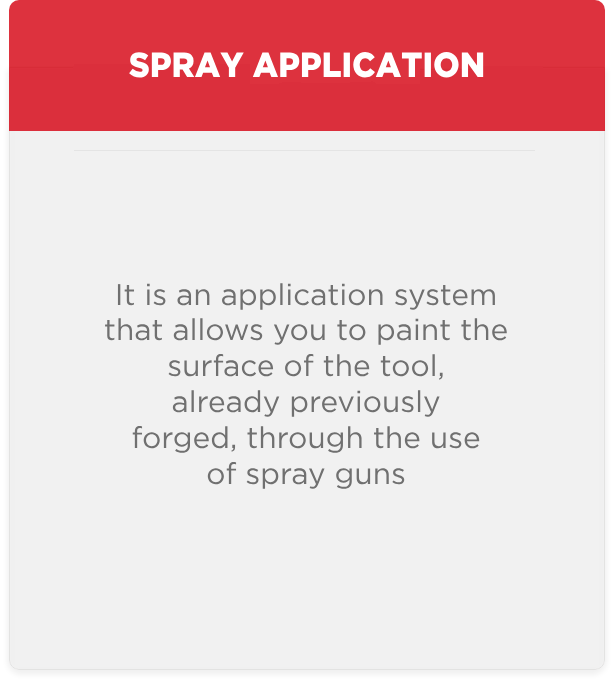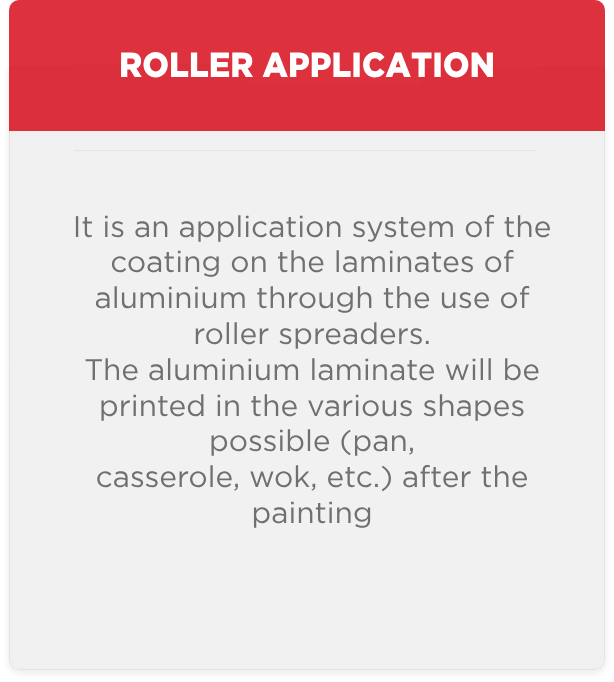Technology
Technology
For us, technological innovation is a constant commitment, from the first to the last stage in the creation of our products.
THE RAW MATERIAL
Thanks to its characteristics of ductility, mechanical strength, lightness and thermal conductivity, aluminium is the perfect metal to make a good kitchen utensil. Aluminium’s low specific weight, about one third of that of steel and copper, makes it possible to make light and manageable products. In addition, one of its main characteristics is its high thermal conductivity, a fundamental requirement for making a good cooking utensil.
The ability to conduct heat in aluminium cookware allows:
- effective temperature regulation during the various cooking phases;
- even heat distribution on all surfaces;
- a reduction in the risk of local overheating and subsequent burns.
The quality of an aluminium pan is partly determined by the thickness with which it is made. A high thickness guarantees better heat dispersion, reducing the likelihood of overheating spots and a more even base. Aluminium is the ecological metal par excellence: it can be reused countless times without ever losing its special characteristics. It is estimated that 70 per cent of the aluminium ever produced worldwide is still in circulation.
According to data for 2017 in Italy, 47,800 tonnes of aluminium packaging was recovered, equal to 68.6% of the total: numbers that confirm our country’s commitment to aluminium recycling.
TECHNOLOGICAL KNOW-HOW
Accademia Mugnano has developed in its laboratories, the exclusive AM Salus application process, which guarantees in the different types of non-stick coating used, the highest performance with regard to
- resistance to corrosion, cuts and scratches;
- wear resistance;
- ease of cleaning;
- protection of consumer health and the environment.
For each of these aspects, the Accademia Mugnano laboratories subject their coatings to strict controls according to international regulations and industry standards. The non-stick coatings applied by us contain, in accordance with California Assembly Bill No. 1200, the substances listed by the Department of Substance Control dated November 16, 2022: – PFASs
Perfluoroalkyl and Polyfluoroalkyl Substances max 600mg/dm2.
COATING STRENGTH CHECKS
M.U.S.T. (Mechanical Utensil Scratch Test)
The coating applied to the pan is verified through a test that consists of quantifying the scratch resistance of a PTFE coating brought to a temperature of 200° by repeatedly scratching with a tungsten carbide ball (e.g. a biro such as Paper Mate 91.534, as recommended by British Standard Specification BS 7069) until the aluminium layer is reached.
The final count, called the cycle, defines the number of times the coating has resisted. Consequently, the more resistant the non-stick coating, the greater the number of cycles attributed to it.
Abrasion resistance test
The abrasion resistance of the non-stick coating is assessed by subjecting the surface sprinkled with household dishwashing detergent to a number of passes of an abrasive sponge (Scotch Brite type). The number of passes indicates the abrasion resistance.
Abrasion resistance according to LGA test parameters
The tool is placed on an orbital oscillator and the inside bottom covered with an abrasive mixture of steel balls, corundum and water. The test evaluates the resistance of the non-stick providing a rating that is a function of the time the tool is exposed to abrasion.
Adherence tests
These are simulations of accelerated cooking in the absence of oil or stress tests of the non-stick coating in order to assess the adhesion of the coating to the aluminium body and its non-stick performance.
COATINGS
ACCADEMIA MUGNANO laboratories, according to their own AM Salus application process, have designed 10 coating systems. These systems use highly resistant and absolutely PFOA-free bio-coatings available with different performance levels, but all with a common high degree of hardness, scratch and wear resistance, as well as excellent non-stick characteristics.


These application systems characterise ACCADEMIA MUGNANO products in terms of strength, quality, health and environmental protection and safety.
COATING SYSTEMS
SPRAY-APPLIED
AM LONG-LASTING COATING
The non-stick for the professional kitchen. GREBLON C3+ PEEK AM Long-lasting Coating. The revolutionary non-stick coating system with several reinforced, spray-applied layers (100 microns of paint): Extremely durable; Exceptionally resistant to cuts and scratches; Extraordinarily non-stick; Unique tactile experience; Compact and enchanting surface An incredible and innovative baking experience. C3+ PEEK: GREBLON Quality Level ******
AM SALUS DIAMOND PROF+
Highly efficient GREBLON C3+ PTFE coating, reinforced with ceramic materials for an extraordinary non-stick effect, high degree of hardness, scratch and wear resistance and maximum durability. Three layers of spray-applied coating. Products with the AM Salus Diamond Prof+ non-stick coating are exceptionally resistant to corrosion, abrasion, cuts and scratches, even under the most extreme conditions of use.
AM MINERAL STONE+, AM MINERAL STONE, AM DIAMOND TECH
Innovative stone-effect PTFE coatings with natural mineral microparticles reinforced with ceramic materials (Mineral Stone and Mineral Stone+). Three coating layers applied by spraying. These are multilayer coatings with a unique mix of titanium particles blended to form an extremely hard and very compact surface capable of: heating up quickly and retaining heat for a long time, guaranteeing a very high degree of non-stick properties, ensuring exceptional resistance to scratches, cuts, abrasions and wear, offering strong resistance to the damaging effects of fats and foods with a high sugar content, and allowing easy cleaning with both rough sponges and in the dishwasher,
AM CERAMIC CK2
Innovative non-stick ceramic coating CK2 GREBLON with multiple layers applied by spraying.

APPLIED BY ROLLER
Method of applying a multi-layer coating system to discs. A roller transfers the coating onto the disc surface, giving it a finely wavy appearance. Three to five layers are applied by roller for a thickness after drying of between 20 and 25 μm. Since the disc is only post-formed after the coating has been applied and dried, the maximum substrate thickness is limited to approximately 3.5 mm. This coating system is suitable for both coined and printed products.
AM PROTECTION SHIELD
AM Protection Shield GREBLON CR 7-layer coating-gives enhanced protection against abrasions and scratches and exceptional non-stick properties. This application system makes it possible to insert a real extra non-stick shield inside the traditional non-stick coating to protect utensils from wear and tear for longer.
AM SALUS EXTRA STRONG & AM SALUS HARD SYSTEM
Three layers of non-stick PTFE coatings applied by roller using the AM Salus Extra Strong and AM Salus Hard process. These systems are characterised by excellent non-stick properties and hardness that make them scratch and abrasion resistant.
AM EXTRA STONE AM SALUS STONE
Special and innovative stone-effect coatings with micro natural mineral particles. AM Salus Stone and AM Extra Stone are multi-layered coatings with a unique mix of stone particles blended to form a hard, compact surface that: guarantees greater resistance to cuts and scratches and ensures perfect, healthy cooking without oil or fat, enhancing the authentic, natural flavour of food.


